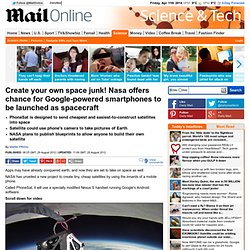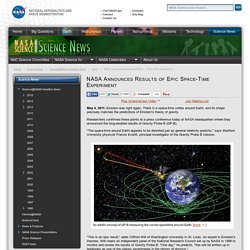

'Super-Earth' with life-supporting climate discovered. NASA'S Spitzer Sees Light Of Lonesome Stars. PASADENA, Calif. - A new study using data from NASA's Spitzer Space Telescope suggests a cause for the mysterious glow of infrared light seen across the entire sky.

It comes from isolated stars beyond the edges of galaxies. These stars are thought to have once belonged to the galaxies before violent galaxy mergers stripped them away into the relatively empty space outside of their former homes. "The infrared background glow in our sky has been a huge mystery," said Asantha Cooray of the University of California at Irvine, lead author of the new research published in the journal Nature. "We have new evidence this light is from the stars that linger between galaxies.
Individually, the stars are too faint to be seen, but we think we are seeing their collective glow. " The findings disagree with another theory explaining the same background infrared light observed by Spitzer. "A light bulb went off when reading some research papers predicting the existence of diffuse stars," Cooray said. NASA offers chance for Google-powered smartphones to be launched as spacecrafts. PhoneSat is designed to send cheapest and easiest-to-construct satellites into spaceSatellite could use phone's camera to take pictures of EarthNASA plans to publish blueprints to allow anyone to build their own satellite By Mark Prigg Published: 06:25 GMT, 29 August 2012 | Updated: 11:08 GMT, 29 August 2012.

NASA: Mars Curiosity on track. By Dan Vergano, USA TODAY Updated 2012-08-17 5:35 PM NASA's newest Mars rover Curiosity looks ready to soon start investigations, engineers report.

Self-portrait of the Curiosity rover on Mars. "Things are going very well," says rover science team chief John Grotzinger of Caltech, who reported that instruments continue to check out aboard Curiosity. The rover landed on Mars on Aug. 6. Sun is too round, say scientists - Science - News. In fact the Sun turns out to be one of the roundest objects ever measured.

10451_earth.jpg (2560×1600) Curiosity rover: Martian solar day 2. Nasa's Curiosity Rover undergoes 'brain transplant' after taking stunning panorama pictures of the Red Planet. Engineers updating the Curiosity's software to allow it to drive on Mars President Obama calls the project team to congratulate themReveals blast marks on surface caused by Curiosity's landing rocketsRover has also sent back first high resolution panorama as scientists test its instruments By James Nye and Mark Prigg and Daily Mail Reporter Published: 16:09 EDT, 12 August 2012 | Updated: 21:26 EDT, 13 August 2012 After releasing exciting images of Mars, NASA's Curiosity rover is undergoing a crucial four day ‘brain transplant’.

Engineers were today continuing to update the rover’s software which is currently in its flight stage to prepare it for its further missions on Mars, NASA said. Great Big Universe / Curiosity's Seven Minutes of Terror. How white holes (might) be created. ATV-3 Approaches the Station. When Runaway Planets Go 30 Million Miles Per Hour. An artist's conception of a runaway hypervelocity planet.

Image courtesy of David Aguilar, Harvard-Smithsonian Center for Astrophysics In 2005, Warren Brown of the Smithsonian Astrophysical Observatory noticed something rather unusual in the sky: a star traveling out of the Milky Way galaxy at roughly 1.5 million miles per hour. The strange discovery could only be explained by an even stranger prediction, made nearly two decades earlier by an astronomer named J.G. Hills. “He predicted that if you have two stars orbiting each other—a so-called binary system—and they get too close to the central black hole in the Milky Way, they will get ripped apart,” says SAO astrophysicist Avi Loeb.
Since Brown’s 2005 discovery, at least 21 hypervelocity stars (as they’ve come to be called) have been observed speeding out of our galaxy. NASA probe offers new view of Mercury: an alien world right in our back yard. Now, after poring over 100,000 images and reams of other Messenger data, space scientists have achieved consensus: Mercury is one weird world.

It is radically unlike the other rocky bodies of our solar system — Venus, Mars, Earth, the moon, and the moons of other planets. Its core is too big; its surface too scrunched. New breed of steamy alien planet found - Technology & science - Space - Space.com. Cosmologists Try to Explain a Universe Springing From Nothing. Why Does Our Universe Have Three Dimensions? Space porn News, Videos, Reviews and Gossip - io9. WeAreStarStuff51's Channel. Dark energy: the universe is destined to become a very cold and lonely place. The 6 Most Mind-Blowing Things Ever Discovered in Space. It's actually really easy to think of space as boring.

The planets in our own solar system all seem to be empty rocks or balls of gas, and you find a whole lot of nothing before you get to the next star. Meanwhile, Hollywood's most creative minds can't get past populating the place with planets that look a whole lot like Earth (and specifically, parts of California) featuring monsters, rapey aliens or Muppets. But real space is far, far stranger. You just have to know where to look to find things like ... #6. Announces Results of Epic Space-Time Experiment. NASA Announces Results of Epic Space-Time Experiment May 4, 2011: Einstein was right again.

There is a space-time vortex around Earth, and its shape precisely matches the predictions of Einstein's theory of gravity. Researchers confirmed these points at a press conference today at NASA headquarters where they announced the long-awaited results of Gravity Probe B (GP-B). "The space-time around Earth appears to be distorted just as general relativity predicts," says Stanford University physicist Francis Everitt, principal investigator of the Gravity Probe B mission.
The 2011 Astronomy Photographer of the Year competition winners. Amateur astronomer Damian Peach has become the first British entrant to win the title of Astronomy Photographer of the Year, beating hundreds of photographers from around the globe in the 2011 competition.

As well as securing the £1,500 top prize, his image takes pride of place in the exhibition of winning photographs opening at the Royal Observatory Greenwich on 9 September 2011. Competition for the 2011 prize was fierce with more pictures received than ever before; over 700 entries from all around the world. Eso1133c - The star cluster NGC 2100 in context. Electric ice a shock to the solar system « Xenophilia (True Strange Stuff) Former Sun-like Star Is Now a Diamond Planet. SolarBeat. The Oscar Wilde Collection.
Graphene in space could hold clues to development of life on Earth. The Carl Sagan Portal. Home. Hubble's greatest hits: Hubble space telescope images. Planets. Double eclipse: Moment Moon AND International Space Station cross face of Sun. By Daily Mail Reporter Updated: 20:58 GMT, 5 January 2011 Britons were only offered a clouded view of yesterday's partial solar eclipse owing to our typically dreary weather. But one lucky skywatcher in south-west Asia managed to catch a doubly striking glimpse of the natural phenomenon. After some careful calculations, photographer Thierry Legault decided to travel to just outside Oman's capital city of Muscat, where he knew he could catch both the Moon and the International Space Station briefly crossing the Sun.
Interactive 3D model of Solar System Planets and Night Sky. 8 Wonders of the Solar System, Made Interactive. Most Amazing Time Lapse Video of Milky Way Ever Made. Seriously. Celestia: Home. Existence: Why is the universe just right for us? - space - 29 July 2011. Read more: "Existence special: Cosmic mysteries, human questions" IT HAS been called the Goldilocks paradox. If the strong nuclear force which glues atomic nuclei together were only a few per cent stronger than it is, stars like the sun would exhaust their hydrogen fuel in less than a second. Our sun would have exploded long ago and there would be no life on Earth.
If the weak nuclear force were a few per cent weaker, the heavy elements that make up most of our world wouldn't be here, and neither would you. If gravity were a little weaker than it is, it would never have been able to crush the core of the sun sufficiently to ignite the nuclear reactions that create sunlight; a little stronger and, again, the sun would have burned all of its fuel billions of years ago.